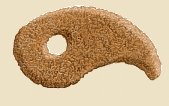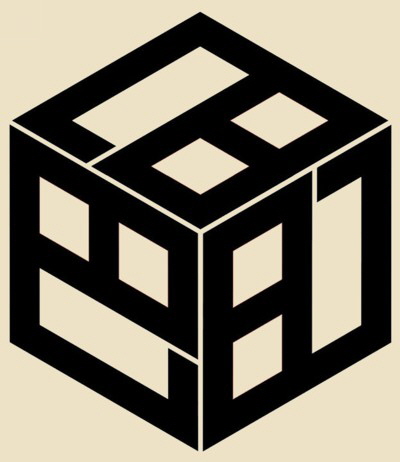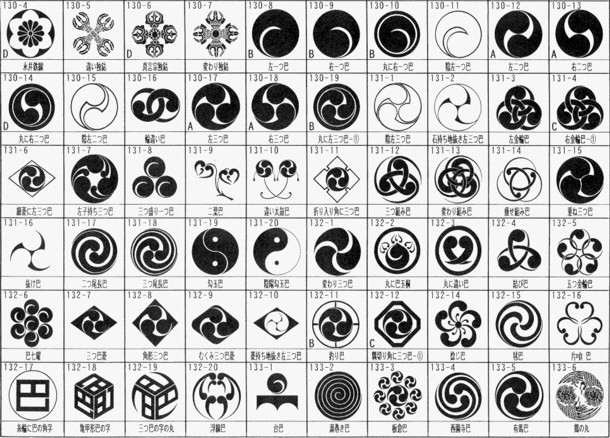|
THIS IS A SIDE PAGE
Click here to return to
What’s Inside the Shrine
MAGATAMA 勾玉 or 曲玉

Talisman of good fortune in Japan.
Bead with religious significance in Japan’s Shintō traditions.
Magatama literally means "curved ball."
The magatama is an ancient Japanese ornament, which most believe was introduced to Japan from Korea around the 3rd-4th centuries AD. The jewel-shaped magatama is also one of the Three Shintō Regalia 三種の神器 (sacred mirror, sword, and jewel), and in this role it is known as the Yasakani no Magatama 八尺瓊曲玉.
From early on, the magatama symbolized "avoidance of evil" or the "magic of good fortune." Its origins are clouded in uncertainty. Some say it represents the shape of an animal tusk, and hence came to represent good luck in agriculture and husbandry. Others say it came from an ancient Korean diagram representing the mother's womb, or embryo, and hence came to mean all good things, like the blessing of a new child, growth, longevity, and properity.
 Thirdly, in my own mind and from my own studies, it is also equally plausible that the symbol originated from the ancient Chinese symbol for Taoism (Daoism), pronounced Dōkyō 道教 in Japanese. Thirdly, in my own mind and from my own studies, it is also equally plausible that the symbol originated from the ancient Chinese symbol for Taoism (Daoism), pronounced Dōkyō 道教 in Japanese.
The prototype magatama were found on artifacts from Japan's early Jōmon Period (13,000 - 300 BC). The icon was refined during the Yayoi Period (300 BC - AD 300), and the "magatama" we know today first became prevelant in Japan's Kofun Period (AD 300 - 650), often as a decorative element used on tumuli or tombs (on the large burial mounds built for elites in Japan's Kofun period -- Kofun literally means "burial mound"). In modern times, the magatama is still sold as a talisman at retail stores. It is commonly made out of precious gems or brightly colored stones, and is small in size (about the size of a coin).
Magatama 曲玉
Below text and image courtesy JAANUS
Also written 勾玉. A bead with religious significance, introduced to Japan from the Korean peninsular. It is thought to have been worn on the body in the Jōmon, Yayoi and Kofun periods. It is usually shaped like a comma (tomoe 巴; see below images), but also found in a left side open square box コ shape or in a mountain shape 山. The size varies from a few millimeters to five centimeters and is made of jadeite 硬玉 (kōgyoku), agate 瑪瑙 (menō), talc 滑石 (kasseki), glass, or jasper 碧玉 (hekigyoku). Kofun-period magatama were incorporated into the crown of the main Buddhist statue at Tōdaiji Hokkedō 東大寺法華堂 in Nara. Nowadays magatama are used as ceremonial items in Shinto festivals and are worn by spiritualist women (のろ noro or 巫女 miko) in religious rituals in the Ryūkyū 琉球 (Okinawa) islands.

Translation: Single Right Tomoe; Double Left Tomoe: Triple Right Tomoe
Says JAANUS about the tomoe: The character tomoe 巴 means eddy or whirlpool; however, it is not clear if this was the original idea of the design. Some scholars are convinced that it stems from the design on leather clothing worn by ancient archers (tomo 鞆 thus tomo-e 鞆絵), a tomo picture. Others say it was originally a representation of a coiled snake. It may be the oldest design in Japan, because it is similar in shape to the magatama 勾玉 jewelry beads of the Yayoi period. It appears as a design on the wall paintings of the Byoudouin Hououdou 平等院鳳凰堂 (1053; Kyoto) and in the Illustrated scroll of the Tale of Genji (Genji monogatari emaki 源氏物語絵巻) of the early 12c. It was widely used from the Kamakura period onward and is often found on utensils, rooftiles and family and shrine heraldry. Its frequent appearence in connection with Shinto shrines indicates that it was thought to express the spirit of the gods. Patterns of one, two and three tomoe exist, some facing left, others right.

Kikkō-gata-domoe-no-ji 亀甲形巴の字
A mitsu-domoe 三つ巴 made up of three 巴 characters.
It is a well-known family crest (kamon 家紋) in Japan.

Various family crests using the tomoe.
Above chart from http://www.taimouhude.com/webcatalogue/kamon/kamon/kamon20.html

Above chart from http://kamon-db.net/portfolio/kikkougatatomoenoji
THIS IS A SIDE PAGE
Click here to return to main Shinto Menu
|